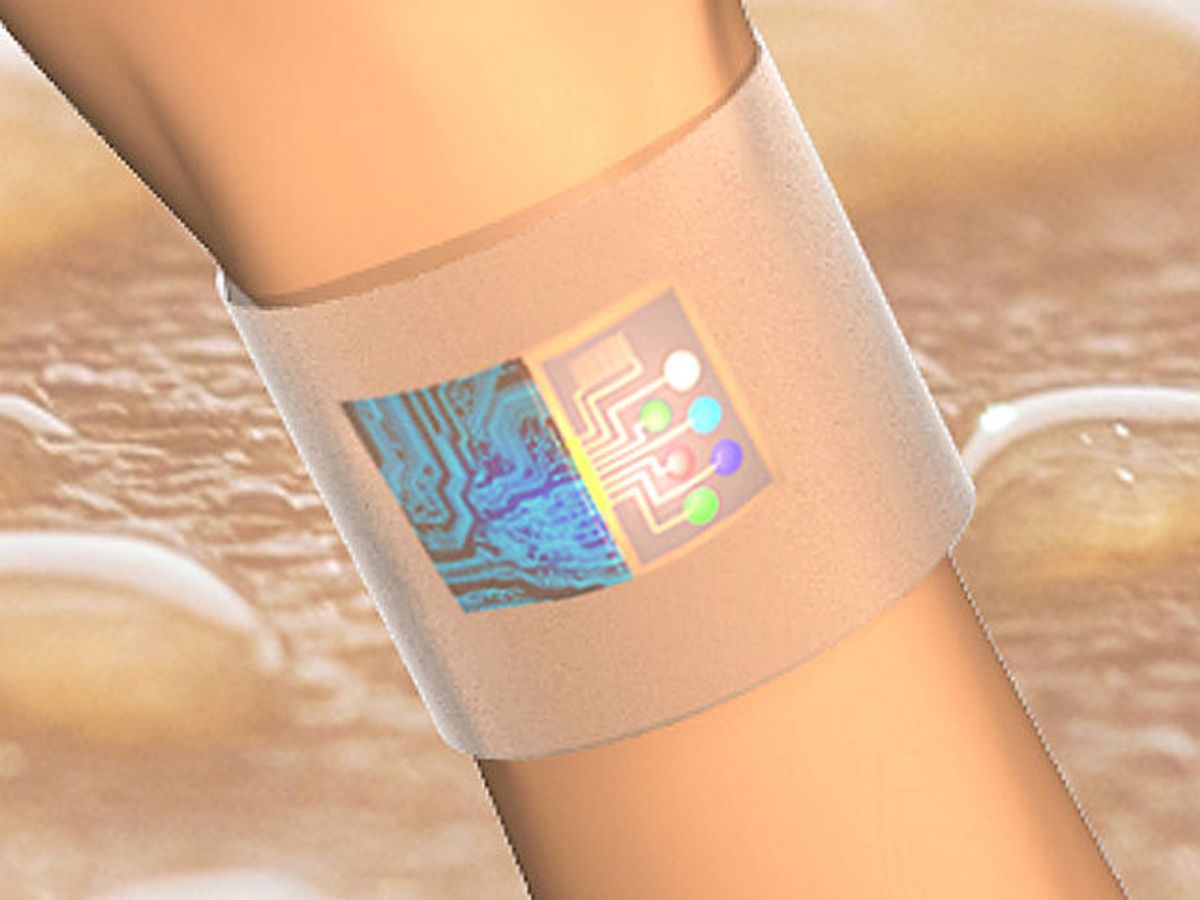Sweat might not be pleasant but it contains dozens of chemical compounds whose concentrations change in real time, compounds that could reveal your body’s response to disease, drugs, diet, injury, and stress, among other things. To tap into that treasure-trove of information, researchers have built a wearable sensor that measures levels of specific molecules in sweat and then wirelessly relays the data to a smartphone via a Bluetooth module.
The smart device, fashioned as a wristband or headband, combines a panel of plastic chemical sensors with silicon integrated circuits made on a flexible circuit board. It continuously measures levels of four different components of sweat: two electrolytes, potassium and sodium ions, and two metabolites, glucose and lactate. Ali Javey, electrical engineering and computer sciences professor at the University of California, Berkeley and his colleagues reported the sensor in Nature.
Other research groups have demonstrated wearable sweat sensors before. But those measure one analyte at a time or don’t have the signal processing circuitry and calibration mechanism to accurately monitor analyte levels.
Javey and his colleagues built an array of chemical sensors, each 3-mm wide, on a flexible plastic substrate. The sensors are similar to ones reported before. They are based on enzymes or special chemical cocktails that react with the metabolite or ion to be measured and generate an electrical signal. But the researchers built on previous sensors by treating electrodes with specific added chemicals that reduce potential drift and make the new sensors more stable and reliable.
The team also added a temperature sensor made of a winding metal microwire across which resistance changes in response to temperature. The temperature sensor is a critical component for accurate monitoring, Javey says. Many sensors developed so far have had a strong temperature dependency. “As temperature changes, output of the sensor changes,” he says. “Of course when you sweat, there are big changes in skin temperatures. So you need to constantly measure temperature and correct the sensor’s output as a function of temperature.”
Electrical signals from the sensor array, which comes in contact with the skin, go to a silicon IC made on a flexible circuit board. The IC filters, processes and calibrates the data and converts it to an output denoting concentration of the analyte, which is sent to the phone.
To test the sensor, a human subject wore the smart wristband and headband while exercising on a stationary cycle. The researchers found that measurements from the sensor matched the metabolite and electrolyte numbers measured in sweat samples taken every few minutes.
Finally, the researchers demonstrated the sensor array’s use to monitor dehydration in people running outdoors by measuring sodium and potassium ions, whose concentration increases with dehydration. “We’re now extending our work to look at a broader spectrum of molecules in sweat for a broader application domain,” Javey says. “Our design is very generic. Should be easy to extend sensors to other chemicals.”
“They’re the first academic group to combine sweat sensors into a complete wearable system with Bluetooth,” says Jason Heikenfeld, a professor of electrical engineering at the University of Cincinnati, who has co-founded the startup Eccrine Systems to commercialize his own lab’s sweat-sensing technology. “This system can sync up to a phone and give continuous data that’s certainly exciting. It’s all engineering but it’s very hard to bring everything together. This takes us a step closer to what people would primarily want to use.”
Prachi Patel is a freelance journalist based in Pittsburgh. She writes about energy, biotechnology, materials science, nanotechnology, and computing.



